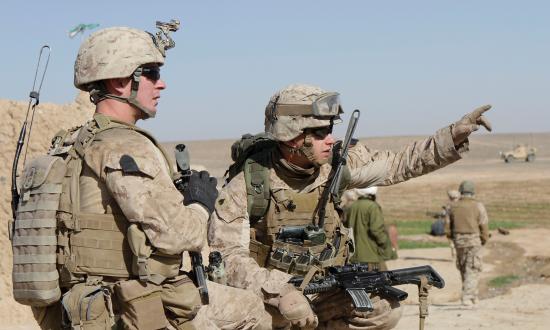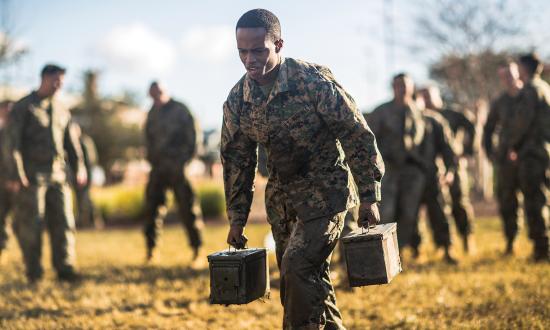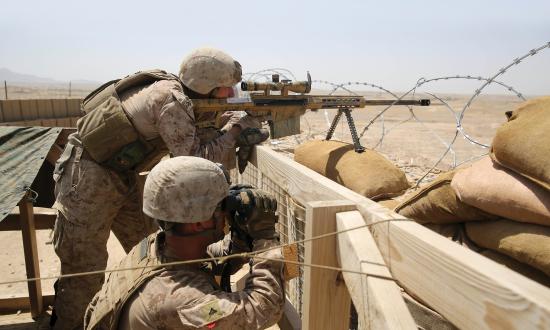Diversity is made up of many different characteristics and elements; however, when people think of diversity, they tend to think in terms of ethnicity, age, and gender. This is likely because such differences are easy to observe and measure. While these differences should be valued, what about differences that are not as easy to identify? One broad category that encompasses such characteristics is cognitive diversity, which is defined as “differences in perspective or information processing styles.”1
Cognitive diversity cannot readily be determined by gender, culture, or age. Furthermore, recognizing and promoting cognitive diversity is difficult because there often are cultural barriers that create unintentional restrictions. For example, coworkers tend to gravitate toward people with similar outlooks and methods of expression.2 In the military, this can occur in the evaluation and promotion systems, where individuals who have a similar outlook to their leaders tend to do better.3 With such “filters” in place, cognitive diversity is likely to be severely restricted.
Does Cognitive Diversity Matter?
Business professionals have found that the best results are achieved when not all team members think alike.4 For example, we all likely have found it is beneficial to have someone else proofread our work. This is a small example of the power of cognitive diversity: By having two perspectives—your own and that of the person proofreading—better results are achieved.
When studying teams, researchers found no correlation between team performance and members’ diversity of gender, age, and ethnicity. But teams with higher cognitive diversity—those that had different information processing styles/perspectives—did achieve higher performance. In addition, when a team is faced with new, complex, or uncertain situations, high cognitive diversity can result in accelerated performance and learning.5
How Can We Increase Cognitive Diversity?
In organizations with homogeneous cultures (like the military branches), the pressure to conform can stifle cognitive diversity. This can be seen in the officer promotion system, which one retired Coast Guard officer noted:
unintentionally fosters risk aversion and suppresses initiative. . . . Coast Guard officers exist in an “up or out” zero-defect environment. . . . Many officers unconsciously act on the principle that the key to moving up is to avoid risk. The result is a service where talented people work hard but frequently maintain a “middle of the road” course.6
In other words, the promotion system can stifle cognitive diversity by discouraging officers from trying innovative approaches. For cognitive diversity to flourish, the Coast Guard needs to create a culture where it is safe for service members to try new things and take reasonable risks without fear of negative repercussions. This is easier said than done.
First, we must realize that the “Golden Rule”—treat everyone as you would want to be treated—creates a potential stumbling block for fostering diversity. In following the Golden Rule, we default to our own personal preferences and working styles and assume everyone else wants to interact with us similarly. This can lead to an environment where supervisors inadvertently neglect or marginalize individuals who are different.7 Furthermore, since we are following the Golden Rule, we often do not realize we are stifling diversity.
The next step is to use empathy to recognize the differences others bring to the table and actively cultivate these differences. We must seek to: (1) identify meaningful differences in people’s working styles, (2) appreciate the value those differences bring, (3) determine what each individual or group needs to excel, and (4) act on this information to become a more effective leader and/or colleague.8 This involves more than just asking someone what he or she thinks. We need to start intentional conversations about different working and information processing styles and create a culture in which it is okay to be different and advertising your differences is encouraged.
Some more concrete steps include adding cognitive diversity and empathy training to all accession and leadership courses and updating the definitions of related metrics in enlisted and officer evaluation forms. Adding meaningful training about empathy and cognitive diversity at all accession points—Leadership and Management School, Chief Petty Officer’s Academy, Midgrade Officer and Civilian Transition Course, etc.—would both create awareness of this topic and signal its value.9
The metrics regarding “teamwork” and “workplace climate” on enlisted and officer evaluation forms also should be updated to include specific language about cognitive diversity and empathy. In the Coast Guard officer evaluation, for example, the definition of “teamwork” could be changed to: “Ability to manage, lead, and participate in teams, employ empathy to recognize the value of all perspectives, encourage cooperation, and develop esprit de corps.”10 The definition of “workplace climate” could be rewritten as: “Ability to create and maintain a positive environment where the differences of all personnel are included, valued, and respected in alignment with Civil Rights and Human Resources policies. Capacity to use empathy to recognize and optimize diverse perspectives to improve team contributions to mission performance.” Additional changes should be made to the individual performance dimension (“number”) definitions in each category. Similar changes could be made to the enlisted evaluation system.11
Tip of the Iceberg
In considering diversity, the military primarily has focused on ethnicity and gender. This is laudable, but we also need to recognize that gender and ethnicity are merely the tip of the diversity iceberg. To truly reflect and be relevant to the diverse nation we serve, each military service needs to actively embrace cognitive diversity and create an environment where diverse perspectives and thought processes are recognized and valued.
1. Alison Reynolds and David Lewis, “Teams Solve Problems Faster When They’re More Cognitively Diverse,” Harvard Business Review (30 March 2017).
2. Reynolds and Lewis, “Teams Solve Problems Faster.”
3. See, e.g., Lee A. Evans and G. Lee Robinson, “Evaluating Our Evaluations: Recognizing and Countering Performance Evaluation Pitfalls,” Military Review (January-February 2020), www.armyupress.army.mil/Journals/Military-Review/English-Edition-Archives/January-February-2020/Evans-Rob-Evals/; and Lori Mackenzie, JoAnne Wehner, and Shelley J. Correll, “Why Most Performance Evaluations Are Biased, and How to Fix Them,” Harvard Business Review (11 January 2019).
4. Sara Canaday, “Cognitive Diversity: What’s Often Missing from Conversations about Diversity and Inclusion,” Psychology Today (18 June 2017).
5. Reynolds and Lewis, “Teams Solve Problems Faster.” However, there are times when a decision has to be made at a certain level of command, or when debate needs to be ended and a decision made.
6. CAPT Stephen Chamberlin, USCG (Ret.), “The U.S. Coast Guard Must Retain Its Most Talented Officers,” U.S. Naval Institute Proceedings 141, no. 8 (August 2015).
7. Kim Christfort and Suzanne Vickberg, Business Chemistry (Hoboken, NJ: John Wiley & Sons, Inc., 2018), 7.
8. Christfort and Vickberg, Business Chemistry, 12.
9. Such training should go beyond having people take a personality/working styles assessment. It should, at minimum, discuss how to use empathy to recognize and harness the power of cognitive diversity.
10. U.S. Coast Guard, CG-5310A, Officer Evaluation Report (W2/W3/O3-O5) (February 2019), https://media.defense.gov/2020/Jul/19/2002459437/-1/-1/0/CG_5310A.PDF.
11. For example, all enlisted evaluation forms contain the evaluation criterion “respect for others.” See U.S. Coast Guard, CG-3788E, Enlisted Evaluation Report: Chief Petty Officer (February 2019), https://media.defense.gov/2018/Feb/28/2001884366/-1/-1/0/CG_3788E.pdf.






